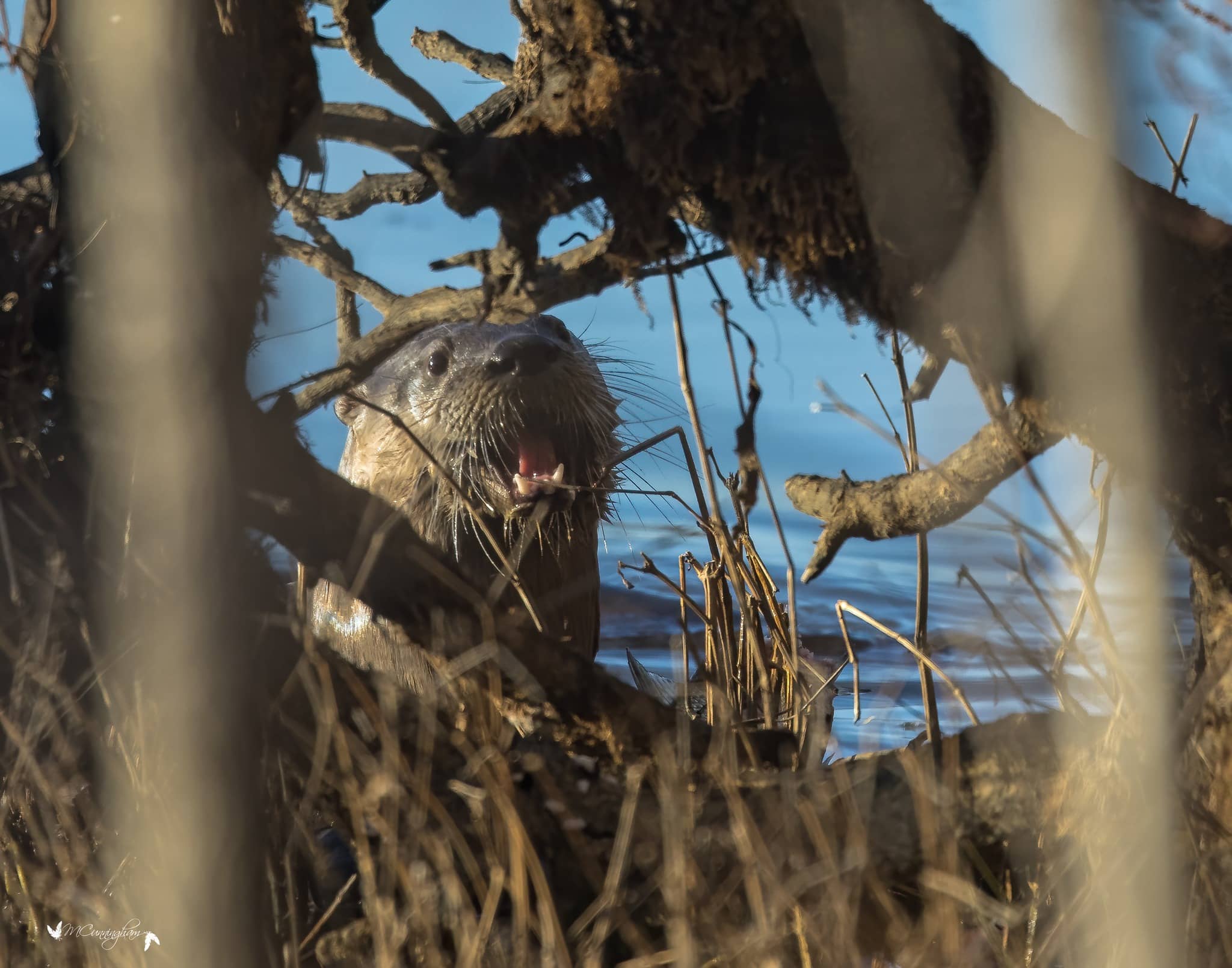
A long-time wildlife photographer in west Kentucky, Melodie Cunningham’s most recent snapshots of the North American river otter for the Land Between the Lakes Woodlands Nature Station came as a surprise to some.
Perhaps it shouldn’t have.
Once abundant in the freshwaters of the Commonwealth, populations were decimated in the early 1900’s — as hunting and urbanization drove them into scarcity.
Now, and according to LBL’s Lead Naturalist John Pollpeter, the semi-aquatic mammal isn’t such a rare sight — with large pods of them in both Honker and Hematite lakes.
The reason, per Pollpeter, is because a push for preservation came in the 1980’s — particularly from the Kentucky Department of Fish & Wildlife Resources.
And in 1982, at the World’s Fair in Knoxville, representatives from the Tennessee Valley Authority exchanged some wild turkeys from LBL for 6-to-11 otters — which were then reintroduced to west Kentucky by the northern shores of Hematite Lake.
Pollpeter said there were several reasons the casual visitor might not ever see an otter in LBL. The super-playful animal can be extremely shy, often feeds nocturnally and spends most of its time in murky, muddy waters — using things like the American lotus as cover and shelter.
Luckily, Pollpeter said west Kentucky and Between the Rivers continues to provide the perfect home for the otter’s rebound — especially with 11 perennial streams constantly flowing toward major tributaries.
At the top of the aquatic food chain in LBL, Pollpeter added that the river otter is even quite formidable on land — should it choose to nest in the 300 miles of shoreline. Adults typically weigh as much as 30 pounds and have sharp claws, used to pry open shellfish.
Only occasionally will they get picked off by feral dogs, bobcats, red foxes, coyotes or wolves. Furthermore, aerial raptors like bald eagles and hawks might snag an unsuspecting otter puppy, but come up empty otherwise.
What’s most important now, Pollpeter said, is the species’ continued revitalization.
And for reference, Pollpeter added that Cunningham has spent hours of quiet, calm observation before catching the creatures on her camera and in their natural habitat.
Currently, it is officially river otter, muskrat, mink, beaver, red fox, gray fox, weasel and striped skunk hunting season in this part of the state — running from November 14 of last year to February 28 during the half hour before sunrise.
Prospective hunters can use centerfire or rimfire guns, a muzzle-loading rifle or handgun, a muzzle-loading or breechloading shotgun no larger than 10 gauge, and with no limit on shot size, though shotguns must be shoulder fired.
Shot shells with a single projectile may only be used during daylight. Bow and arrow, or crossbow, are also permitted, as are air guns with pellets at least .22 caliber in size. Hand or mouth-operated calls, electronic calls and attracting device are allowed, as well, as is the use of falconry.
It’s also worth noting that officials from KF&W are collecting lower jaws from hunted and trapped bobcats and river otters for a population study.
For more information, contact the department at 1 (800) 858-1549, or visit fw.ky.gov.




